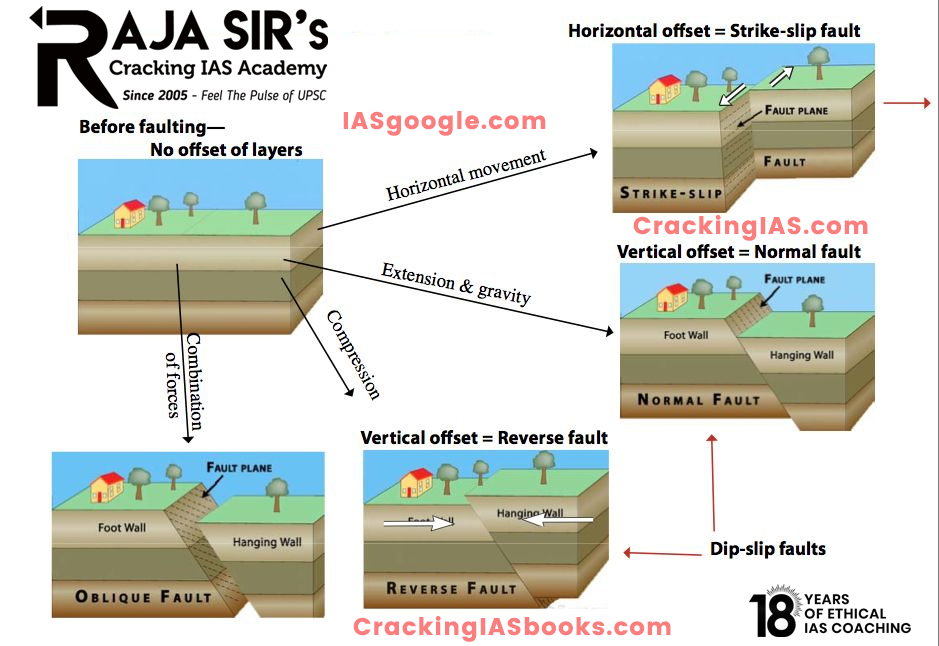- Home
- Prelims
- Mains
- Current Affairs
- Study Materials
- Test Series
Types of Faults
- A fault is a fracture or zone of fractures between two blocks of rock. Faults allow the blocks to move relative to each other.
- This movement may occur rapidly, in the form of an earthquake – or may occur slowly, in the form of creep.
- Faults may range in length from a few millimeters to thousands of kilometers.
- Most faults produce repeated displacements over geologic time. During an earthquake, the rock on one side of the fault suddenly slips with respect to the other.
- The fault surface can be horizontal or vertical or some arbitrary angle in between.
- Earth scientists use the angle of the fault with respect to the surface (known as the dip) and the direction of slip along the fault to classify faults.
Dip slip- Dip-slip – movement occurs when the hanging wall moved predominantly up or down relative to the footwall.
- If the motion was down, the fault is called a normal fault, if the movement was up, the fault is called a reverse fault.
- Downward movement is “normal” because we normally would expect the hanging wall to slide downward along the foot wall because of the pull of gravity.
- Moving the hanging wall up an inclined fault requires work to overcome friction on the fault and the downward pull of gravity.
Strike slip–When the hanging wall moves horizontally, it’s a strike-slip
- If the hanging wall moves to the left, the earthquake is called right-lateral, if it moves to the right, it’s called a left-lateral fault.
- The way to keep these terms straight is to imagine that you are standing on one side of the fault and an earthquake occurs.
- If objects on the other side of the fault move to your left, it’s a left-lateral fault, if they move to your right, it’s a right-lateral fault.
Oblique slip-When the hanging wall motion is neither dominantly vertical nor horizontal, the motion is called oblique-slip. Although oblique faulting isn’t unusual, it is less common than the normal, reverse, and strike-slip movement.










 Latest News
Latest News
 General Studies
General Studies